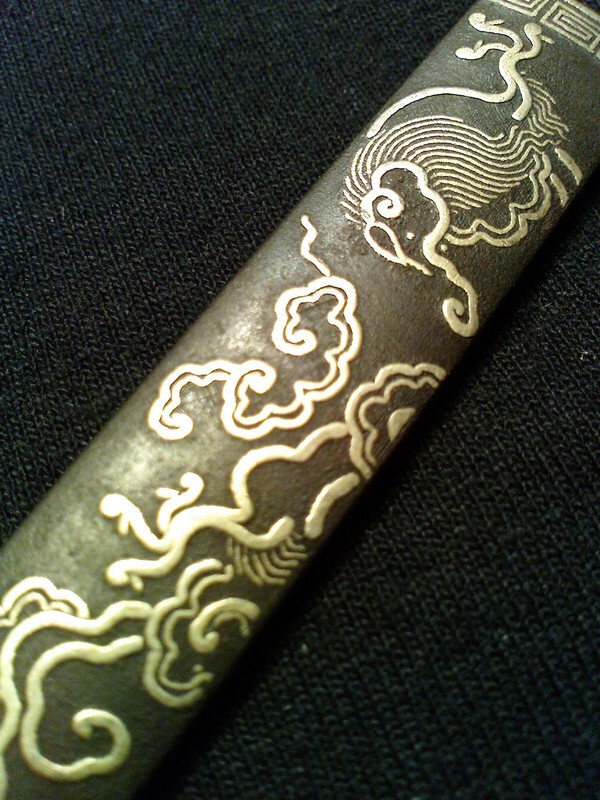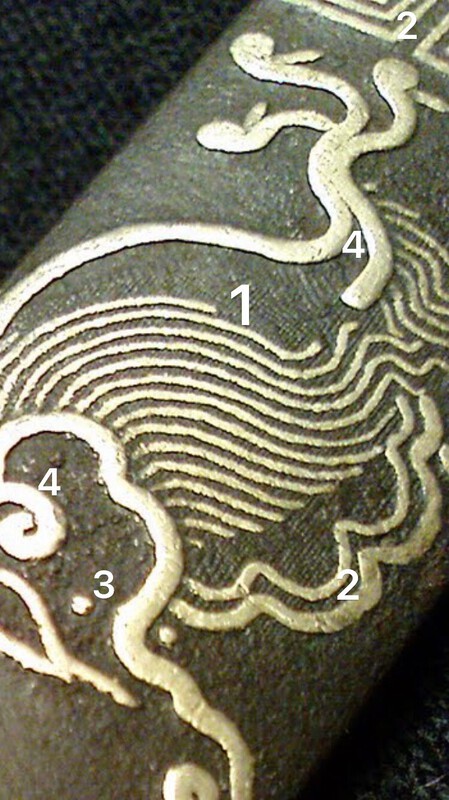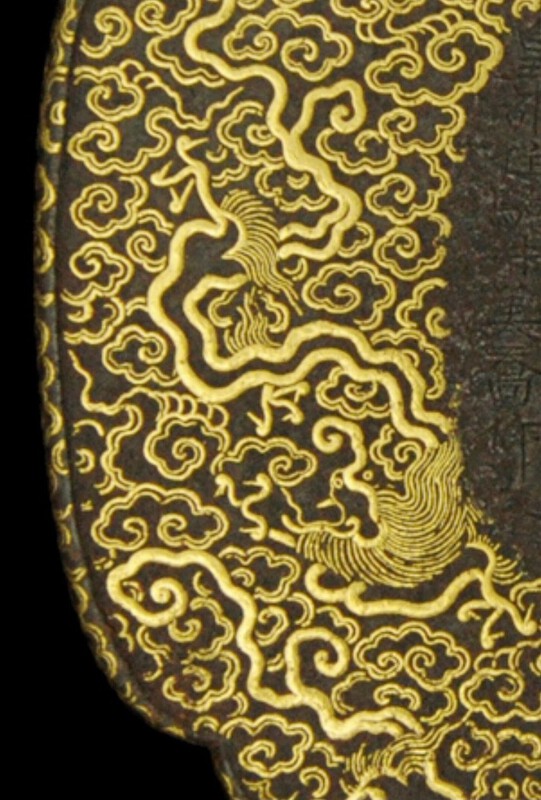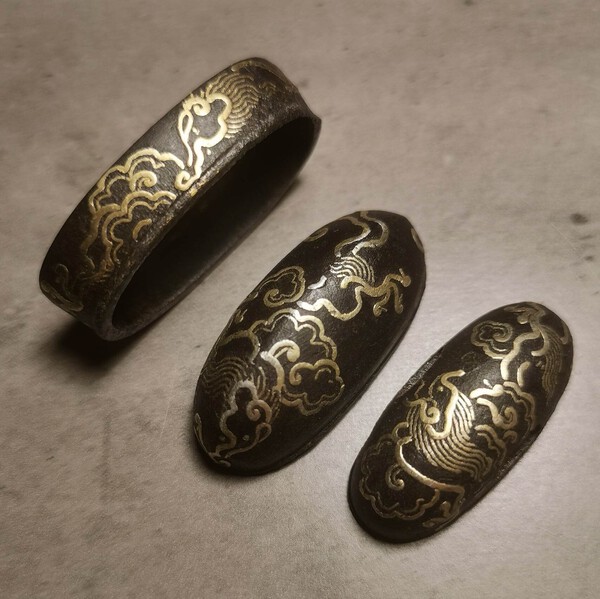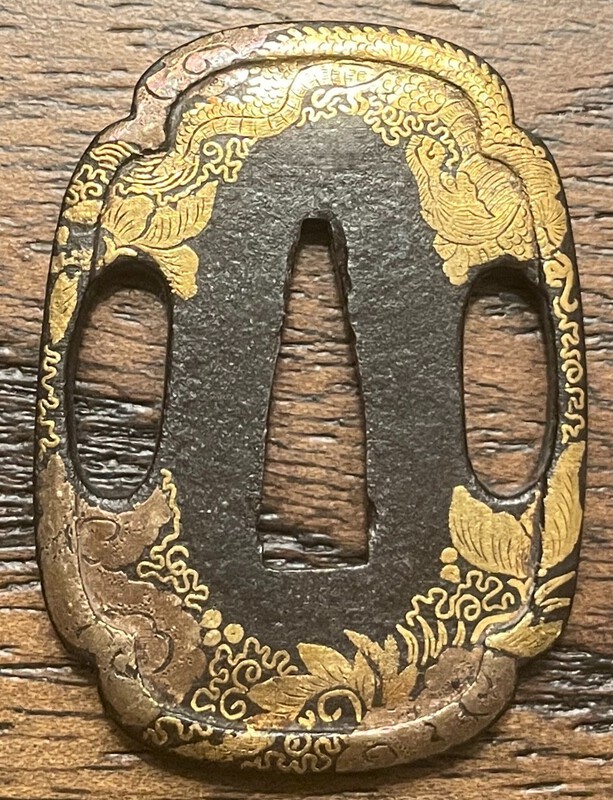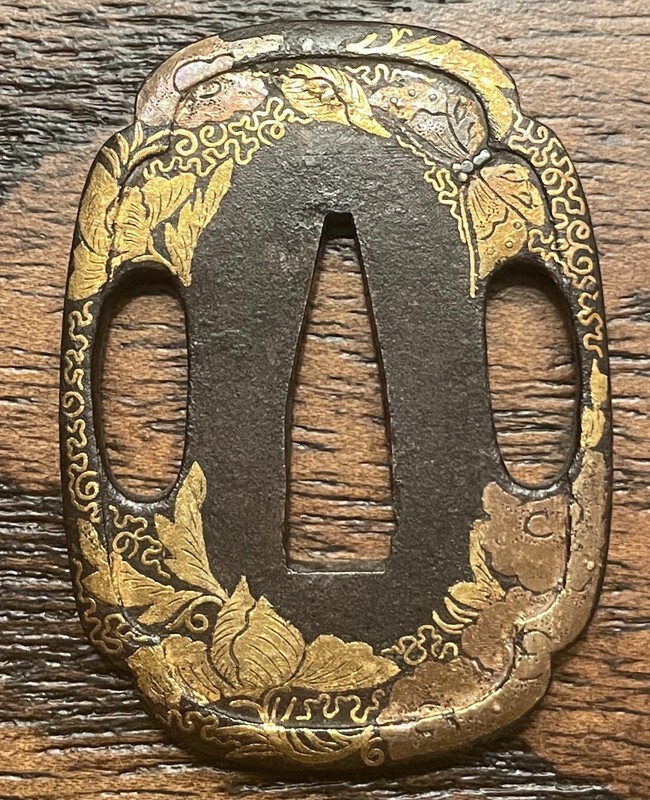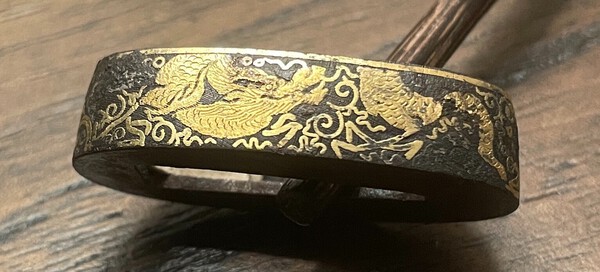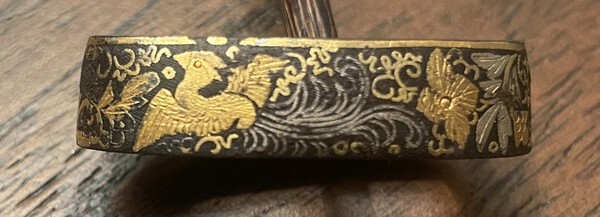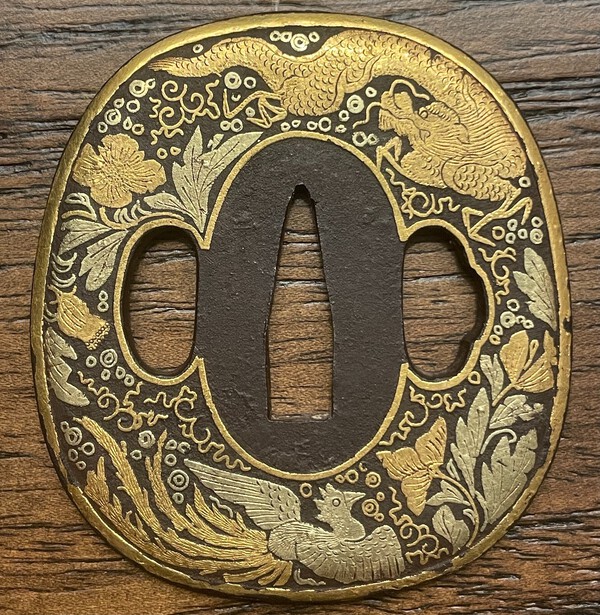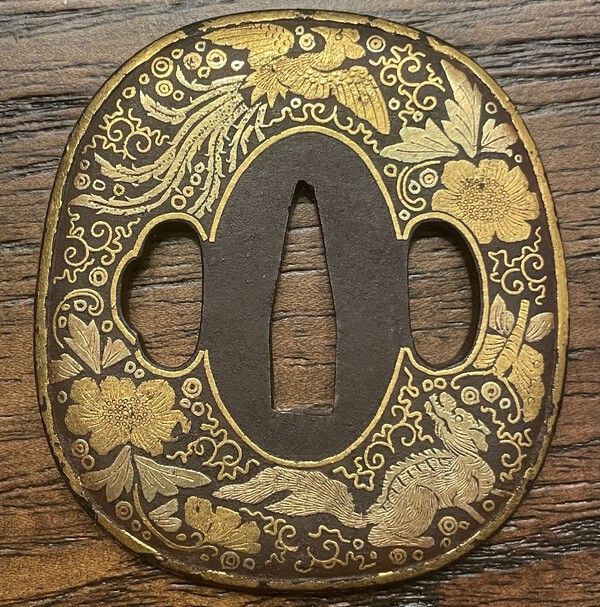-
Posts
369 -
Joined
-
Last visited
Content Type
Profiles
Forums
Events
Store
Downloads
Gallery
Everything posted by Tcat
-
You're proably right, a lot of it is probably not metal oxide but blackned varnish / urushi. I didnt clean any of these parts by the way. I wonder if that is also urushi on the tsuba.
-
After rust and oxidation were removed... That's a pretty incredible transformation would you not agree. At first glance most people, even most collectors, would overlook the above blackened and rusted items without knowing what lies beneath. I believe this is part of the reason we dont see a lot of these koshirae..many are likely damaged.
-
-
-
I'm not certain.. but theres a good chance yes. Not lost it, its probably still there under the black oxidation. I'm not sure about this but I think the type of alloy has a significant effect on how the oxidation works; while only a light shade different when 'fresh', oxidizes a completely different colour. I'm not a metal artist so would like to get input from anyone with the knowledge. Knowing more about this I think would be a great way to recognize 'sleeper' fittings which could be restored. Could be silver...could be both, could be gold. I don't know...I'm just leaning towards gold of a different shade. Nice examples of silver tarnish you posted above but I see no silver really in the tsuba we were discussing.
-
Cleaning doesnt require repatination...these two are separate exercises. I don't think there has been any repatination on this tsuba. You noticed the reddish tint to the three gold areas with the red outline so I hope you will also notice that the two on the left are redder, because more of the gold has worn away here, perhaps from fingers reaching for the kogai. In the red circle on the right you will see its yellower, because you're not seeing so much copper showing through the worn areas. The areas marked in the green and red cicles above I believe are/were not silver or shakudo or copper colour when the tsuba was produced but gold. Unfortunately black oxidation has taken over what was once a 'gold' colour of a different hue to what remains yellow now. I think only the umigane has always been shakudo...not 100 percent on that though. When I say I think it's been cleaned I say that in a relatively loose sense. There's still plenty of oxidation remaining, the dragon, the fish, the leaves etc. likely should all be gold.
-
If they look like they fall into of Kenjo style fittings heck yea post 'em up. There are all kinds of vines on fittings... Hey if that gave you a kick, head over to youtube and rewatch the intro in HD. If it doesnt get your blood pumping youre already dead. PS. The sword of omens is a ken, change my mind.
-
Quite elementary - becuase over the years it was damaged by oxidizing corrosion - iron oxide/rust and copper acetate/verdigris. The tsuba has been 'cleaned' since then, the oxides have been removed and subsequently there has been loss of materials. Short-sighted take I believe. NMB is an awesome research tool and I often read posts here 15+ years old. People will be able to witness your unwillingness to accept the obvious for years to come
-
The evidence is there for all to see on the other side of the same tsuba that Dale posted earlier in the thread... Here it is again in detail...pretty obvious the example above also had gold nunome on it which wore off. According to the current generation of pro metalworking artists, this was a method used to improve results because gold tends to adhere to copper better than it does to steel using this technique...I remember Ford mentioning it at some point.
-
Found an example of it here...so judging by this construction I belive there to be a considerable amount of 'true inlay' used to create a better base for adhesion with other mixed/soft metals.
-
Ah-ha...humps. In this case no I dont think so. Not iron anyway, but on more worn examples of Kyo-Kenjo tsuba I have seen what looks like a sort of wide copper wire inlay exposed underneath where thicker parts of the nunome used to be. An example would be the ho-o birds' tails in the first tsuba I posted, which I suspect uses the same method to improve adherance. Keep in mind that inlay of any kind is still likely to last longer than nunome when it comes to handling. Which is another reason why I suspect we dont see many Kyo-Kenjo koshirea. Great info about the wolves. Will have a look.
-
That’s a great closeup and lovely kao. I commented earlier that I think all the work on your tsuba appears to be nunome. I think I haven't been clear enough so I’ll include some additional closeups below. Here is a kozuka with the same theme: If we take a closer look we can see four sizes/gradients of gold used to create the design. I number them from smallest to largest to illustrate: It was always my belief that 1 and 2 are nunome while 3 is punched and inlayed, and 4 is channel carved and inlayed. You will notice that the nunome crosshatching which is quite visible under macro does not extend into those areas with the thicker gold “lines”. It was of my understanding that they don’t need to, because those parts are inlayed. I am open to the idea that I am completely misunderstanding the manufacturing process however…
-
No sorry, youve got the wrong dragon, I was referring to the Komai dragons and clouds I posted above. See the thickness of the metal used for the body of the dragon, I dont think this will adhere correctly with nunome crosshatching alone. All of the images I have shared, aside from the Komai dragons and clouds, use nunome. I am looking for examples of kodogu other than tsuba which carry the same or similar theme and style of execution.
-
That’s a beautiful example and thank you for posting. The work on your example is all nunome. I think the Komai example I posted above is not. See the thickness of the body of the dragon? I believe this mass of metal won’t adhere correctly with just the nunome crosshatching technique.
-
Are you thinking of later Komai work? I I was referring in particular to this style below which is made by Komai and surely includes inlay. Agree, except for the double vines which I believe could be inlayed but am not sure.
-
Gold not brass.
-
I have been trying to get hold of one of these with this motif...there are a few out there. Theres one on yahoo Japan now but with sakura motif. A collector in the US has one but its out of my reach. Here's a matching set for the kozuka...
-
This one is fairly similar but has the double vines. I include another example below, hamidashi tsuba.
-
I was wondering what that creature was... I thought it could be a fox as in the above example posted by Dale. Good to know. There's a similar one to the above on ebay with the double wire thread vines and phoenix. I have yet to find any other fittings aside from tsuba in this style...
-
Great menuki Dale never seen one like it...what school would it be?
-
-
Gentlemen, I was wondering if anyone can produce photo examples of matching nunome work fittings by the Kenjō / Kyo-Kenjō artists. I'm mostly referring to the flat / hira inlay type seen here under Kenjo work - http://jameelcentre....ection/7/10237/10370 rather than the heavier more deeply inlayed work like Komai's dragons and clouds. I am particularly looking for examples of F/K, kozuka and kogai or complete fittings which match the style of the images below, theres also a kurigata and kojiri but not pictured. I wonder if it is possible to pinpoint a school or some schools who did this kind of work, rather than the general 'Kyo-Kenjō' attribution. None of the tsuba I can find in this style are signed, and I can find no other examples of similar F/K, kozuka, kokgai, kurigata, kojiiri etc online. I expect that far more tsuba were made in these shops than any other kind of sword fitting. The smoking samurai website is marvellous but so far I cant find a match.
-
Nice examples. Maybe a forumite can confirm if it's true that in the case of tsuba and other tosogu, animals depicted with open mouths are to be taken as female?
-
I sure have missed this hobby.
-
Some really fantastic photos in there....







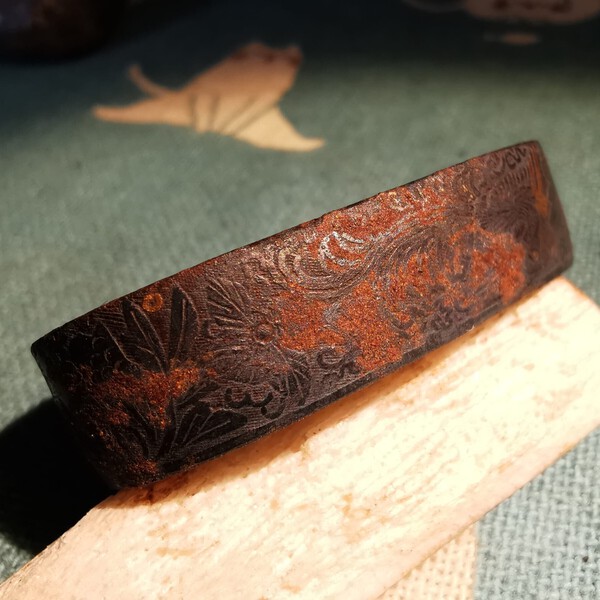


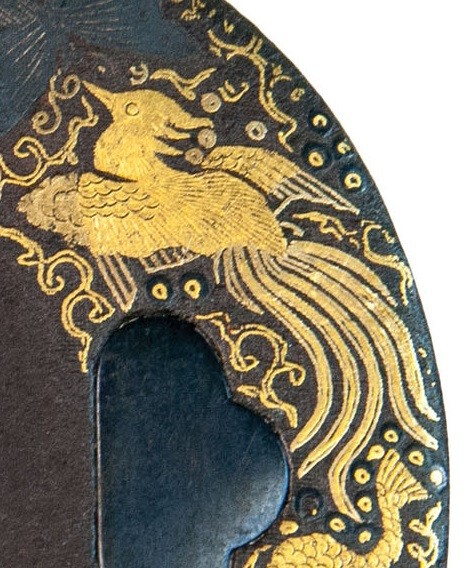
.thumb.jpeg.f697ab6d6a7135e81b498864021dec7b.jpeg)
